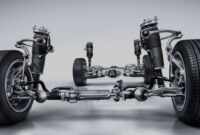Hybrid Technology: Bridging the Gap to a Greener Future
Introduction
As the global automotive industry races toward a sustainable future, one technological innovation stands out as a crucial transitional solution: hybrid vehicle technology. Positioned between traditional internal combustion engines (ICE) and fully electric vehicles (EVs), hybrid vehicles offer a practical, scalable, and efficient path toward reducing carbon emissions without demanding a complete overhaul of infrastructure or consumer behavior.
In 2025, hybrids continue to play a vital role in the transition to cleaner mobility. This article explores the evolution, mechanics, advantages, challenges, and future of hybrid technology in the automotive sector—highlighting how it is effectively bridging the gap to a greener future.
1. The Evolution of Hybrid Vehicles
1.1 Early Concepts and Innovations
The concept of hybrid propulsion dates back to the early 20th century. In 1901, Ferdinand Porsche designed the Lohner-Porsche Mixte Hybrid, one of the first vehicles to combine an internal combustion engine with electric motors. However, due to the dominance of cheap gasoline and lack of battery technology, interest in hybrids faded for most of the century.
1.2 Modern Hybrid Renaissance
It wasn’t until the late 1990s that hybrid vehicles re-emerged with practical applications. The launch of the Toyota Prius in 1997 marked the beginning of the hybrid era. By integrating an electric motor with a small gasoline engine, the Prius demonstrated significant improvements in fuel efficiency and emissions, especially in city driving.
The success of the Prius inspired other automakers to develop hybrid technologies, and by the 2010s, hybrid vehicles became a staple of eco-conscious transportation.
2. Understanding Hybrid Vehicle Technology
2.1 Types of Hybrid Vehicles
There are several types of hybrid vehicles, each with distinct technology and use cases:
a) Mild Hybrid Electric Vehicle (MHEV)
• Features a small electric motor that assists the gasoline engine.
• Cannot operate in electric-only mode.
• Improves fuel economy by supporting start-stop systems and regenerative braking.
• Example: Audi A6 MHEV, Suzuki Swift Hybrid.
b) Full Hybrid Electric Vehicle (FHEV)
• Capable of operating on electricity alone for short distances.
• Automatically switches between electric, gasoline, or a combination of both.
• Uses regenerative braking to recharge the battery.
• Example: Toyota Prius, Ford Escape Hybrid.
c) Plug-in Hybrid Electric Vehicle (PHEV)
• Larger battery that can be charged via an external power source.
• Can drive 30–60 miles (or more) on electricity alone.
• Automatically switches to gasoline once the electric range is depleted.
• Example: Mitsubishi Outlander PHEV, Toyota RAV4 Prime.
2.2 Key Components
• Internal Combustion Engine (ICE): Provides power when electricity is insufficient or when additional torque is needed.
• Electric Motor/Generator: Assists the engine and can power the car independently in certain conditions.
• Battery Pack: Stores energy for the electric motor, recharged via regenerative braking or external charging (for PHEVs).
• Power Control Unit: Manages the energy flow between the engine, battery, and electric motor.
3. Environmental Impact and Efficiency
3.1 Fuel Efficiency Gains
Hybrid vehicles significantly reduce fuel consumption compared to conventional ICE cars. A full hybrid can achieve 30–50% better fuel economy, especially in stop-and-go traffic, where the electric motor is most effective.
3.2 Emission Reductions
Hybrids emit fewer greenhouse gases and pollutants, particularly CO₂ and NOx. A plug-in hybrid can operate emission-free for short trips and still provide long-range flexibility with its gasoline engine.
3.3 Lifecycle Emissions
While hybrids involve some emissions during manufacturing—especially from battery production—they offer net positive environmental gains over their lifetimes, especially when used efficiently and regularly in urban areas.
4. Economic and Practical Advantages
4.1 Affordability Compared to EVs
Hybrids often cost less than full electric vehicles, making them more accessible to the average consumer. For instance, a Toyota Corolla Hybrid may cost thousands less than a comparable EV while still offering significant fuel savings.
4.2 No Range Anxiety
One of the biggest barriers to EV adoption is range anxiety. Hybrids eliminate this concern by combining electric power with gasoline, ensuring that drivers never run out of energy, even on long trips.
4.3 No Charging Infrastructure Required (FHEV/MHEV)
Unlike EVs or PHEVs, full and mild hybrids do not require external charging infrastructure. This makes them ideal for areas where charging stations are scarce or unreliable.
5. Hybrid Technology in Different Vehicle Segments
5.1 Passenger Cars
Hybrids are most common in compact and midsize passenger cars. They offer excellent fuel economy, low maintenance costs, and high resale value.
5.2 SUVs and Crossovers
Hybrid SUVs like the Toyota Highlander Hybrid or Ford Escape Hybrid balance efficiency with space and performance, making them popular with families.
5.3 Trucks and Commercial Vehicles
Hybrid technology is now entering light trucks and commercial fleets. The Ford F-150 Hybrid combines power and payload capacity with improved fuel economy, appealing to businesses and rural users.
5.4 Luxury and Performance Cars
Brands like Lexus, BMW, and Porsche have adopted hybrid powertrains to boost performance and efficiency. The Porsche Panamera E-Hybrid is a prime example of combining luxury, speed, and sustainability.
6. Government Policies and Market Adoption
6.1 Incentives and Subsidies
Many governments offer tax credits or incentives for hybrid and plug-in hybrid vehicles. These policies have played a significant role in boosting sales globally.
• United States: Federal tax credits up to $7,500 for PHEVs (varies by battery size).
• European Union: Lower road taxes and congestion charge exemptions.
• China: Subsidies and free registration plates for hybrids in major cities.
6.2 Emissions Regulations
Stricter emissions standards are pressuring automakers to electrify their fleets. Hybrids provide a compliant solution while EV infrastructure catches up.
7. Global Market Trends in 2025
7.1 Leading Markets
• Japan: Over 40% of new car sales are hybrids.
• Europe: PHEV popularity is growing due to emissions zones in cities.
• North America: Hybrids are gaining ground, especially in SUV and truck segments.
• China: Significant investment in PHEVs as a transition to full electrification.
7.2 Consumer Behavior
Consumers are increasingly aware of sustainability but cautious about EV limitations. Hybrids offer a middle ground—reliable, affordable, and green.
8. Challenges Facing Hybrid Technology
8.1 Perception as “Transitional”
Some critics argue hybrids are only a temporary solution and may hinder full EV adoption. However, their practical advantages in the short to medium term remain strong.
8.2 Battery Recycling and Sustainability
Though smaller than EV batteries, hybrid batteries still present end-of-life challenges. Manufacturers must develop effective recycling and second-life use strategies.
8.3 Complexity and Repair Costs
Hybrids involve dual powertrains, which can increase repair complexity. However, improved reliability and warranty coverage mitigate this concern for most consumers.
9. Innovations in Hybrid Technology
9.1 Regenerative Braking 2.0
Modern hybrids use more efficient regenerative systems that capture up to 70% of braking energy, significantly boosting range and efficiency.
9.2 AI and Smart Hybrid Systems
AI-driven systems optimize the interaction between engine and electric motor based on real-time conditions, driver behavior, and terrain. This maximizes fuel economy and responsiveness.
9.3 Solar-Assisted Hybrids
Some manufacturers are experimenting with solar panel integration to supplement battery power. While not yet a primary energy source, it helps extend range and reduce grid dependency.
10. Role in the Transition to Full Electrification
Hybrid vehicles serve as a technological and behavioral bridge:
• Infrastructure Transition: Hybrids don’t require full EV infrastructure, easing the load on developing regions.
• Consumer Acceptance: Familiarity with electric driving prepares consumers for EV ownership.
• Automaker Strategy: Hybrids allow automakers to comply with regulations and build electrification expertise without abandoning ICE platforms immediately.
As EVs mature and infrastructure improves, many hybrids are designed to be upgradeable or convertible, showcasing future flexibility.
11. Leading Manufacturers and Their Hybrid Strategies
Toyota
• Global leader in hybrid technology with over 20 years of experience.
• Offers a hybrid version of almost every model.
• Developing solid-state batteries to merge hybrid and EV tech.
Honda
• Focus on compact hybrids with seamless integration.
• Known for models like the Insight, CR-V Hybrid, and Accord Hybrid.
Ford
• Expanding hybrid powertrains to trucks and SUVs.
• Hybrid versions of F-150, Escape, and Maverick are market leaders.
BMW and Mercedes-Benz
• Integrating PHEV systems in luxury and performance vehicles.
• Targeting emissions compliance without compromising performance.
12. The Future of Hybrid Vehicles
12.1 Extended Range Plug-In Hybrids
Next-gen PHEVs may offer 100+ miles of electric range, covering daily needs with zero emissions and extending long-distance flexibility.
12.2 Integration with Renewable Energy
Hybrids will increasingly pair with solar homes and smart grids, allowing intelligent energy use and storage.
12.3 Hydrogen-Hybrid Concepts
Some automakers are exploring hydrogen-electric hybrid powertrains as an alternative to lithium-based batteries, combining hydrogen fuel cells with electric motors.
12.4 Phase-Out Timeline
While hybrids remain crucial today, many regions have announced gradual phase-outs:
• EU and UK: Ban on ICE and hybrid sales after 2035.
• California: Phasing out PHEVs by 2035.
• China: Incentives shifting toward BEVs over hybrids post-2030.
Still, hybrids will remain essential in developing regions and as part of global logistics fleets for decades to come.
Conclusion
Hybrid vehicle technology is more than just a stepping stone — it’s a critical enabler of the global transition to sustainable mobility. In 2025, hybrids offer real-world solutions to environmental, economic, and logistical challenges. By combining the best of internal combustion and electric power, they deliver efficiency, reliability, and accessibility.
As battery technology improves, charging infrastructure expands, and consumer demand evolves, hybrids will eventually give way to fully electric vehicles. But for now, they remain an essential bridge—uniting innovation with pragmatism, and paving the road to a cleaner, smarter future.



